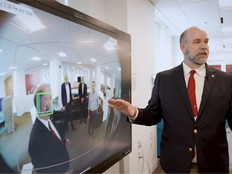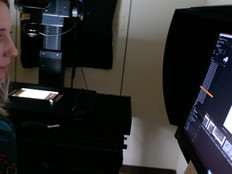Digital Workspace
Smithsonian’s Digitization Program Captures and Preserves Delicate Treasures
The Smithsonian Institution’s massive collection includes items too fragile to put on display or so complex that they’re difficult for scientists to study. Its Digitization Program Office takes these objects and creates 3D scans that preserve them for history, research and outreach to people who may not be able to visit the Washington, D.C., museums.
If you enjoyed this video, check out the rest of our Feds in the Field series. For more on scanning and digitization, try these stories:
Library of Congress Uses Modern Tech to Digitize American History
How Agencies Should Prepare for NARA’s Deadline to Digitize Federal Records
Review: The Ricoh Fi-8170 Scanner Creates Great Electronic Records In Minutes
Algorithms May Take Over the Job of Scanning Dense Federal Documents
Participants
Nicholas Pyenson, Curator of Fossil Marine Mammals, Smithsonian’s National Museum of Natural History
Vincent Rossi, 3D Program Supervisor, Smithsonian’s Digitization Program Office
John Blundell, Program Officer, Smithsonian’s Digitization Program Office
Video Highlights
- Not all of the 145 million objects at the Smithsonian’s National Museum of Natural History on display; online digital 3D models make them available to scientists and members of the public unable to visit in person.
- The Digitization Program Office team uses DLSR cameras and Autodesk software to turn regular photographs into 3D images stored online.
- The more than 3,000 items scanned across all Smithsonian museums include the space shuttle Discovery, sculptures and other art pieces, live orchids and rare fossils such as the “beach bear.”





